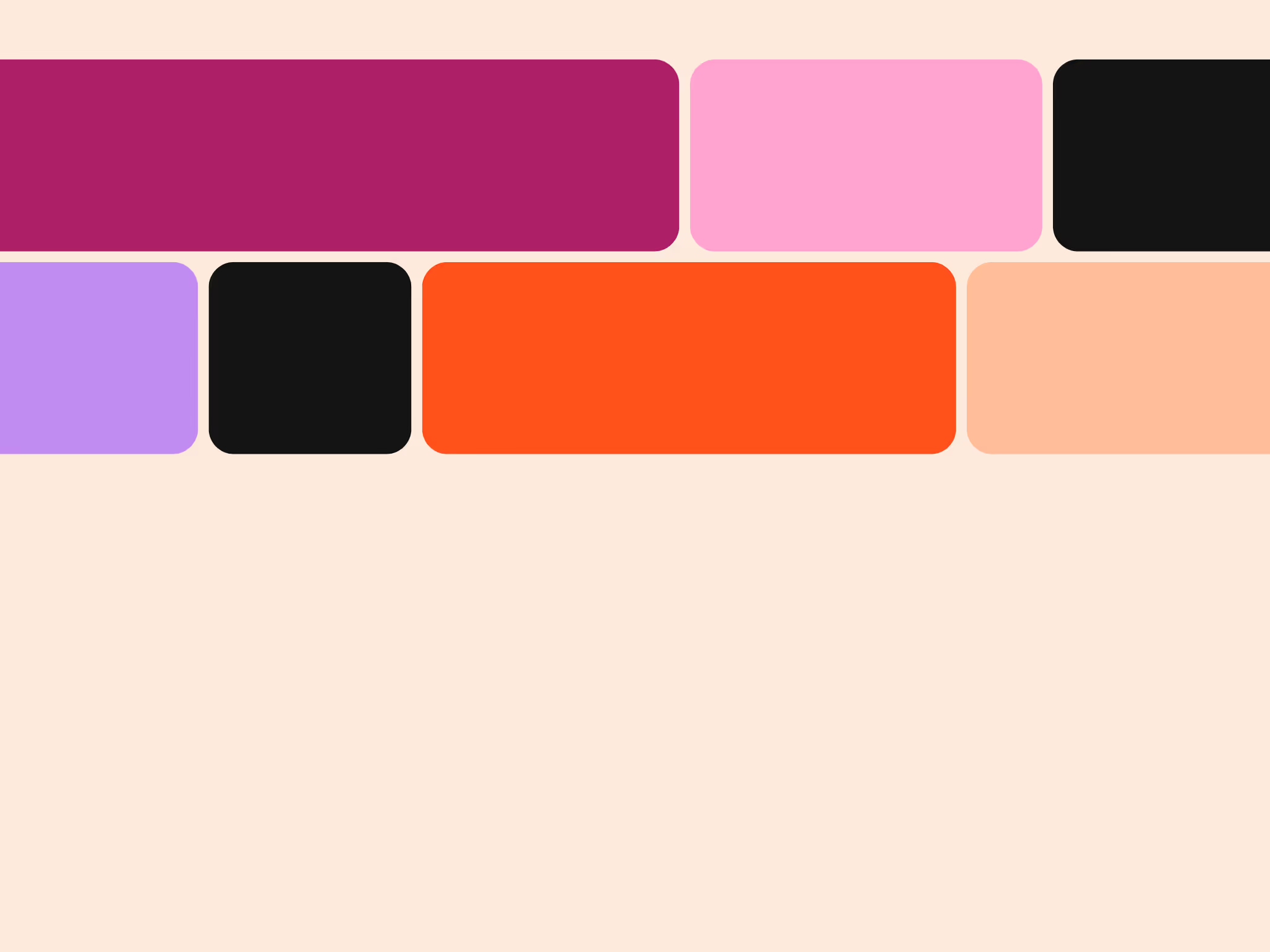Influencer gifting is quickly becoming a marketer’s fav. Generate brand awareness, start new creator relationships with low risk, and maybe even get some direct sales. What’s not to like?
Gifting, while popular in influencer marketing, is far from sunshine and rainbows. It can be tricky to recruit the right influencers for your campaign, and it can be even trickier to manage.
How do you actually run a successful gifting campaign?
- Where do you find the right creators?
- Do you offer a payment in return?
- How do you maximize the ROI?
This piece will share everything you need to know from A–Z.
What is gifting exactly?
Influencer gifting is a type of creator collaboration where you give your product to an influencer for free – no-strings attached (hoping they’ll post about you) or in exchange for a post/honest review. Take this post by Casey Jade flaunting her newly gifted ring by jewelry brand regalrose.
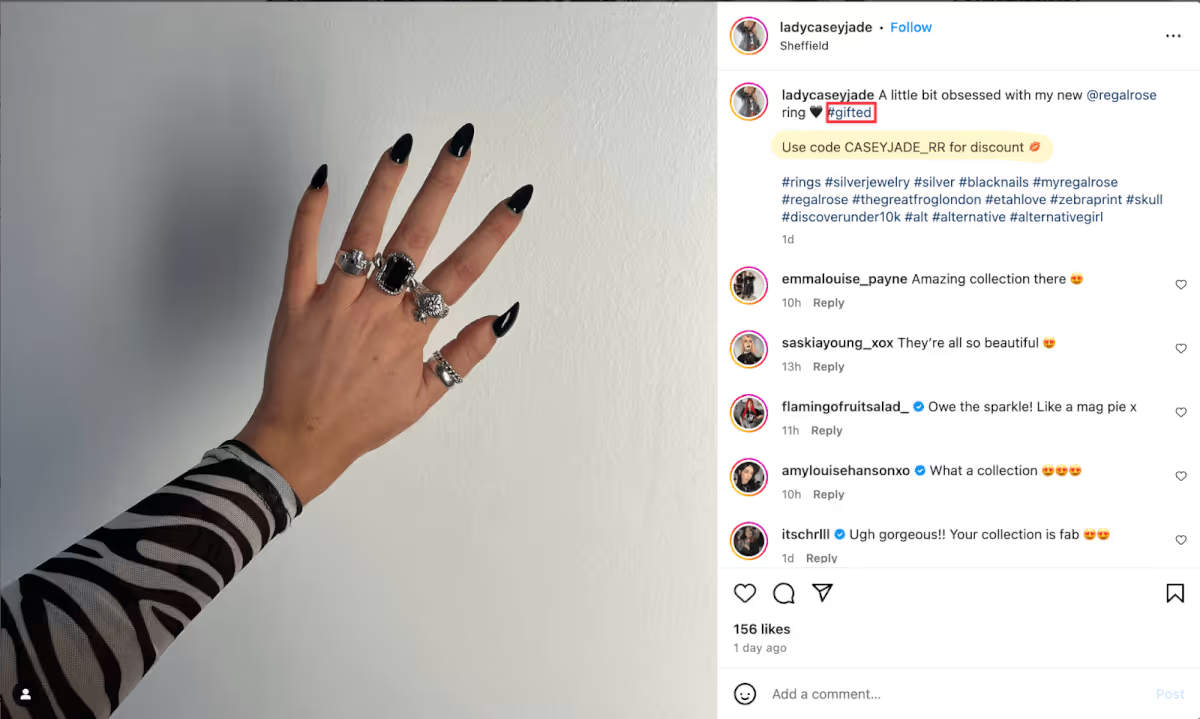
Gifting deals are usually done with smaller - micro or nano - creators in order to generate a large volume of collaborations, and the most amount of reach and awareness with little to no paid budget.
(Pssst..if you’re looking for more examples, check out this article about 10 brands acing influencer gifting.)
Now, there are a lot of common questions and myths around influencer gifting that we need to clear before moving on to the nitty-gritty. First, there are two types of deals in influencer gifting:
Barter deals: you gift your product to an influencer and ask for content in return.
No-strings-attached deals: you gift your product with no expectations whatsoever.
The core difference is in the expectations from the influencer. In barter deals, the creator agrees to post a certain number of deliverables after receiving your product. In the no-strings-attached approach, there’s no such obligation. A creator is free to post or not post about you.
There’s no better approach. Which option you should choose depends on your goals with the gifting campaign. Ieva Rees, Influencer gifting team lead at BURGA, practices a mix of both, for instance:
She continues:
Here’s a quick rundown of the advantages and disadvantages of both methods to help you decide:
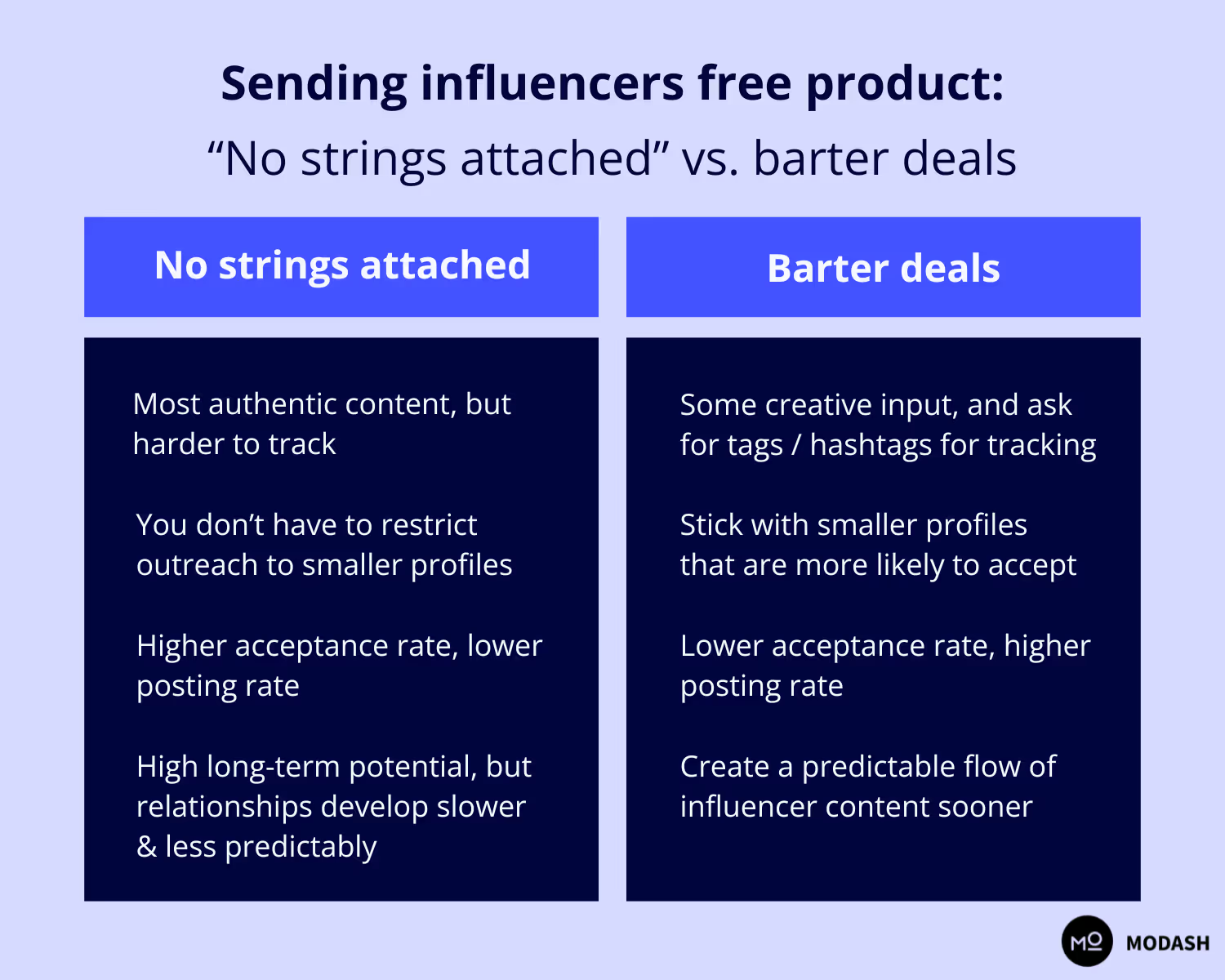
In conclusion:
- Choose barter deals when you need to produce influencer content quickly or consistently.
- Choose no-strings-attached deals when you want to produce authentic creator content and build influencer relationships.
Are gifting collaborations paid?
Gifting collaborations can be paid or unpaid. If you’re practicing a no-strings-attached approach, paying is out of the question. Since you’re offering your product for free with no expectations, you don’t need to pay the influencer to post about you.
But if you’re running barter deals, the payment is the free product in return for their post. This is great for when your budget is limited.
As an extra incentive to a creator, you can offer influencers a unique code or UTM link to earn performance-based commissions. This helps the brand offer the creator something more than the free product (& get direct conversions) and also allows the influencer to earn. Talk about a win-win. For example, look at how BURGA gave a personalized discount code to the creator along with gifting the product.
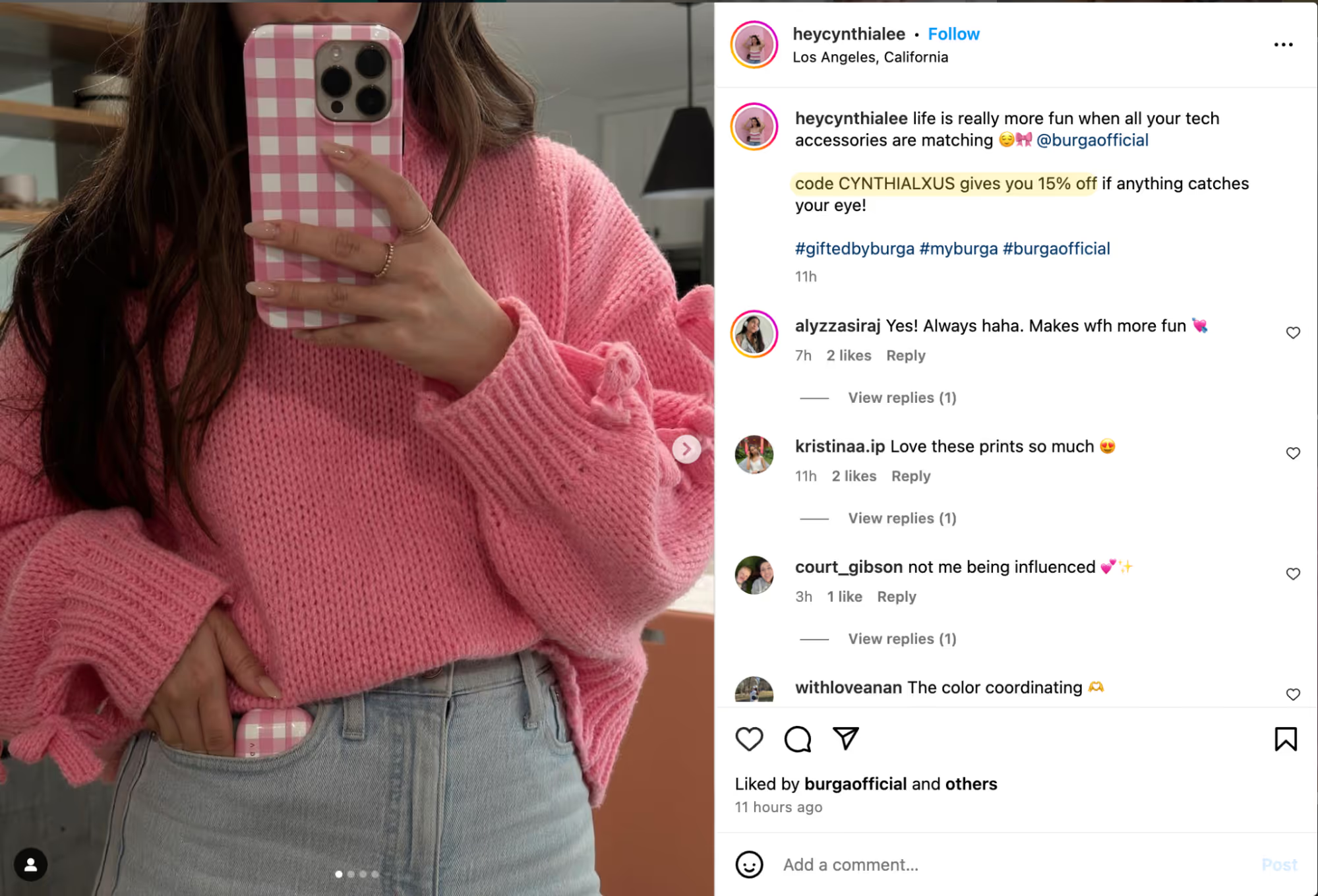
Brenna Clay, Digital Marketing Specialist at Chaco Footwear, says this mix of affiliate (an influencer earning commission via UTM links or special codes) and gifting partnerships is beneficial because it helps creators get compensated and have more skin in the game.
Payment might also come into the picture if and when you ask to repurpose the influencer generated content for paid ads, newsletters, social media, etc. Some influencers will ask for $$$ when you ask them for the usage rights. Influencer marketing expert, Dmitri Cherner, argues investing here can help you create a more significant impact with your gifting campaigns:
Influencer product seeding is another term for gifting, but it's usually reserved to "no-strings-attached" style gifting campaigns. You're just sending product to influencers without asking for anything in return.
Should you have a contract for influencer gifting?
You don’t need an influencer contract for no-strings-attached deals because there aren’t any expectations in the first place.
But what about barter deals? The effort and friction of a contract might not be worth it – unless your product value is high or there are unusual conditions at play (like you’re also paying monetary compensation to the influencer or asking for the product to be shipped back after delivering content).
After all, the only risk you take by eradicating the contract step is losing your product value. Abdullah Khan agrees:
Khan isn’t the only one. In our survey of 31 influencer marketers, 36.5% said they don’t create a contract for gifted collaborations. A majority (41.2%) have a written agreement, but no contract.

Another alternative is to offer a "terms and conditions" section of your influencer brief that functions as a mini-contract for your collaboration. This can help plug the gap that not having a contract leaves, but keep your influencer on the line in tandem.
You don’t necessarily need a contract when you gift your product, but you need to have an official licensing agreement once you ask a creator for usage rights to their content. You need to have everything formalized once your partnership graduates to this level.
This doesn’t even necessarily have to be a 10-page formal contract – it can be as simple as a Google Form with your terms and conditions written down. Just note that the formality of your contract, if you choose to put one in place, will be proportional to how much you’re protected in case the creator doesn’t hold up their end of the bargain.
What to expect during a gifting campaign
Many marketers struggle to master gifting campaigns because they set themselves up for disappointment. This section will detail specific parameters you can predict on the following dimensions:
- A. Timelines
- B. Response rates and closing rates
A: Timelines
Here’s the thing: an influencer gifting campaign takes time. Probably more time than you’re accounting for.
A good tip is to think backward from when you want the influencer generated content to go live. For example, let’s say you want published posts by influencers around October 31. You must begin your efforts roughly eight weeks before, around September 5.
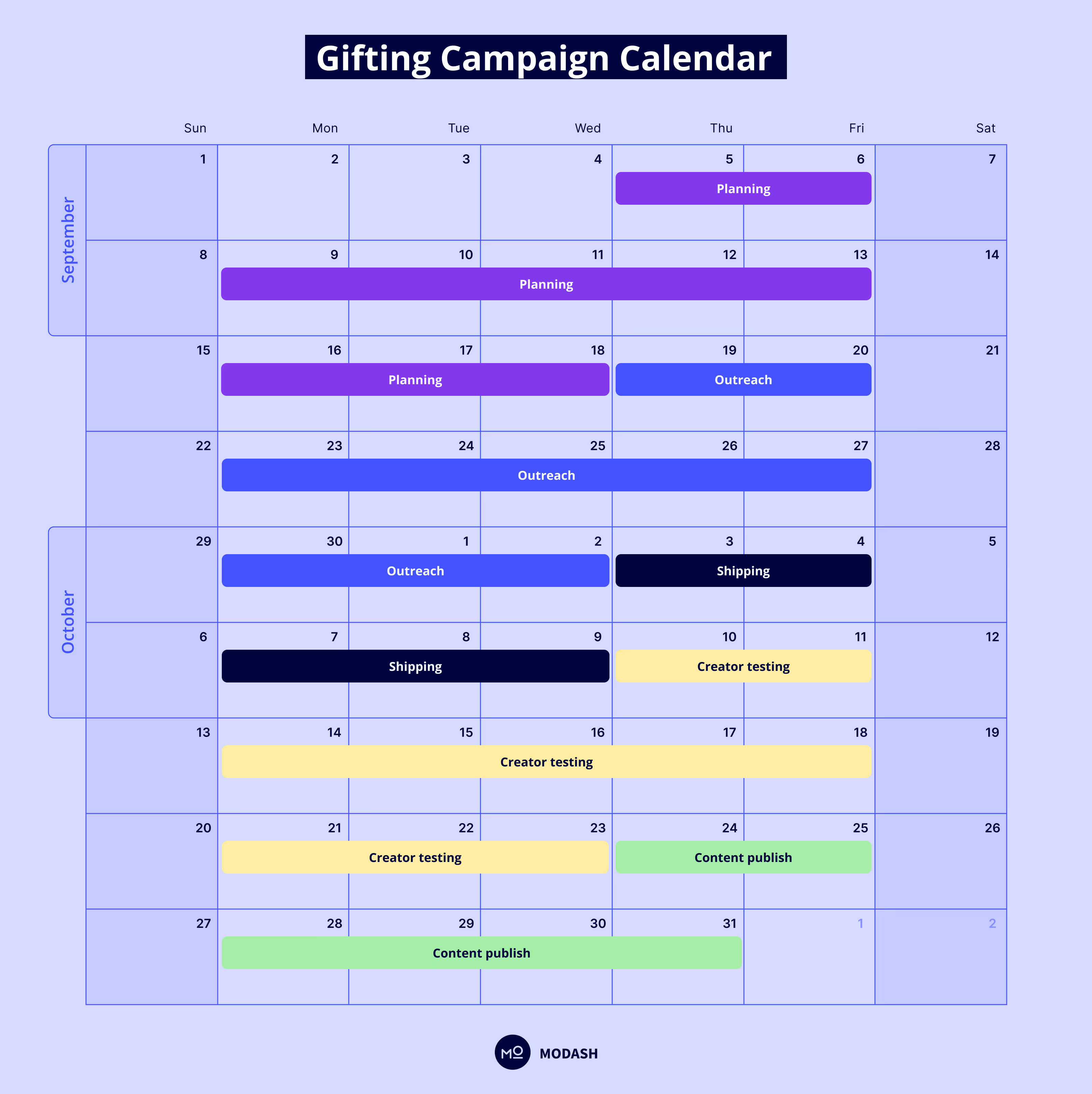
Week 1–2 (5th-19th Sep): you need a couple of weeks to map out your gifting strategy and find relevant influencers who match your criteria.
Week 3–4 (19th Sep-3rd Oct): these two weeks are dedicated to influencer outreach, back-and-forth communication (i.e. getting address details), and negotiations.
⚠ Note: Count followups in the buffer time you dedicate to communication. If your response rate is lower than you wanted, you'll need to add a buffer time to find more creators to hit the numbers you want.
Week 5 (3rd-10th Oct): this week is for shipping your products to influencers after finalizing everything.
Week 6–7 (10th Oct-24th Oct): after creators receive your product, they need time to test them and create content. This can be more or less depending on your agreement with them.
Week 8 (24th-31st Oct): your influencer content from the gifting campaign goes live!
It’s always a good idea to be more conservative with your timeline and add buffers every step of the way. There are a lot of things that can cause delays in your gifting campaign – shipping issues, outreaching & following up, creators delaying creating content, etc. Expect some influencers to be late, move the deadling, and not to follow your brief to 100%. The more you accept this ahead of time, the fewer surprises you'll have.
If you’re able to get things moving faster, that’s great! But if not, having a buffer helps you avoid stress and set more realistic expectations.
Note: for products that require more extensive testing (think: skincare, supplements, etc.) - you may need to extend the timeline even further.
B: Response rates and closing rates
Whether or not influencers respond to you depends on many factors, like:
- The market
- Your brand’s niche
- The influencer (size, popularity, etc.)
- Your product offering (whether you’re offering just one product or letting the influencer choose)
- Your company’s brand awareness (every creator is going to respond to Nike, for example)
A good average you can expect is a 30% response rate and a 10% closing rate. So with a (very) rough estimation, if you want to work with 10 influencers for your gifting campaign:
- you should reach out to at least 100 creators
- expect around 30 of them to get back to you
- and expect 10 of those to actually get on board
⚠ Note: Your response and posting rates are also affected by whether you’re doing barter deals or a no-strings-attached approach.
- Barter deals might get a lower response rate, but a higher posting rate since influencers who respond agree to the terms
- No-strings-attached deals might get a higher response rate because who doesn’t like free products but a lower posting rate since there’s no obligation attached.
Maris Niilus, Customer Success Manager at Modash and former Influencer Marketing Executive at Trendhim, shares what post rates to expect:
Now that your expectations are set in real ground, let’s dig into how you can start running a gifting program.
How to start a successful gifting program
There are five overarching steps to run a successful gifting program:
- Step 1: Defining your campaign goals and criteria you want in an influencer
- Step 2: Finding your influencer partners
- Step 3: Outreaching to shortlisted creators
- Step 4: Negotiating the terms of your collaboration
- Step 5: Managing and tracking your gifting campaigns
Let’s dig into each step one by one.
Step 1: Define your campaign goals and influencer criteria
First, you need to solidify the ultimate aim of your gifting efforts. Because if you don’t know where you want to go, how will you get there? Your goals will dictate everything from the kind of influencers you choose to how you measure the ROI of your campaign.
You can have four primary goals with a gifting campaign:
- Build brand awareness: this means you want new eyes on your product and brand from potential customers (who match your ICP).
- Generating direct sales: you can offer influencers your product with a discount code to bring conversions from your gifting efforts.
- Start new influencer relationships: you’re offering free products to build creator relationships and lay the groundwork for a long-term collaboration.
- Collect content for paid ads, newsletters, social media, etc.: you gift a product to generate UGC content for the brand to repurpose and reuse in various places & forms.
You don’t need to have a singular goal – all these four objectives can work together in tandem. But it helps to prioritize. In our survey, the most common goal of gifting campaigns was generating brand awareness.
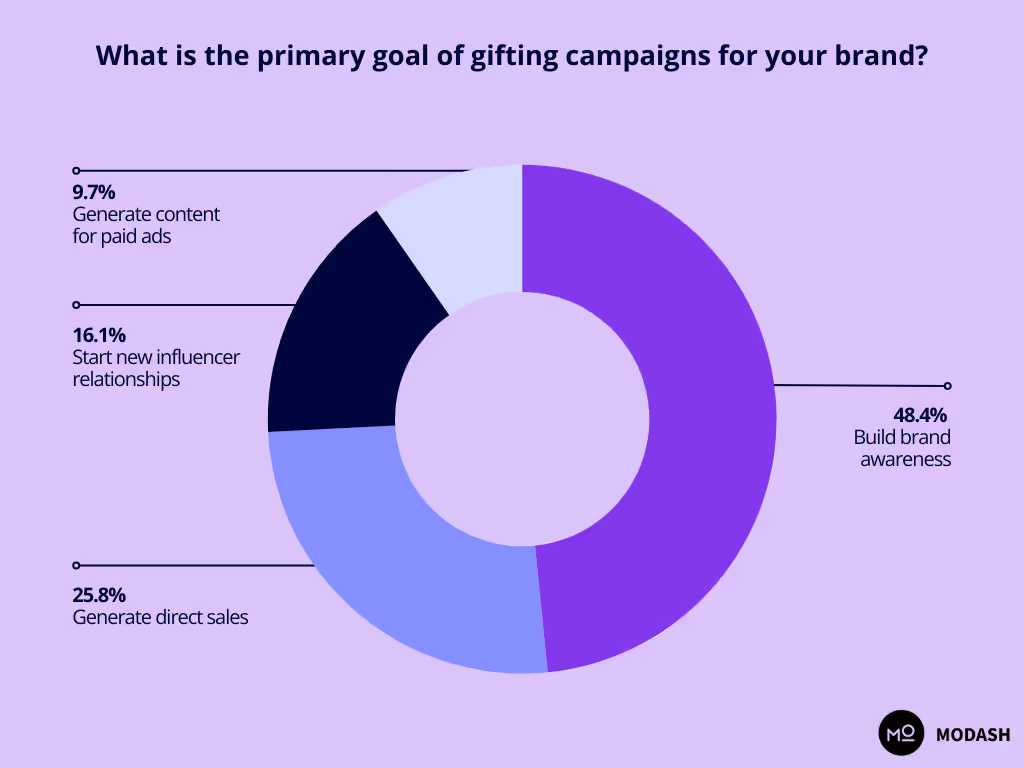
Along with choosing one from above, you must also map your budget and how many influencers you’d like to partner with for this campaign. These two aspects are interdependent and will help you create accurate timelines and outreach goals.
- What is your gifting budget? This includes your product cost and shipping cost, primarily.
- How many influencers do you want to gift to? Your product value and budget determine how many creators you can realistically gift to. Don’t forget to take into account how many gifting collaborations you can manage simultaneously as a small team.
Lastly, you need to nail down the specifics of the kind of influencer you want, depending on your goals.
- What type of audience should a creator have – that is relevant to your ICP?
- Do the creators have to live and have a following in a specific target market?
- Do you want to target nano & micro influencers or larger influencers?
- How do you define and evaluate brand fit for this gifting campaign?
Having a crystal clear idea of your campaign goals and the kind of influencer you want will give you a solid direction when you venture into step two.
Step 2: Find your influencer partners
Now that you know exactly the kind of creators you’re looking for, it’s time to get hunting. There are two kinds of creators for your gifting campaign:
- Warm creators: finding influencers who are already interested in working with your brand and are already vocal about your products on social media
- Cold creators: proactively using influencer search tools to find creators who match your criteria (but who may be unfamiliar with your brand and products)
Warm creators are easier to partner with, but unless you're at an established brand, there might not be enough of them to really build out your program. Proactive recruitment to find new (cold) creators puts you more in control of the process, audience demographics, etc. That said, both kinds of creators have their merit and should be used in conjunction to find the crème de la crème of influencer partners.
Warm creators
Prioritizing influencers who already love your brand has its benefits:
- You already know the influencer is interested in working with your brand, so response and posting rates are likely going to be higher
- Your partnerships will be more authentic since the creator is already aware of and impressed by your products
Cheyanne Pettyjohn, Director of Influencer Marketing at Rookie Wellness, gifts to influencers they’ve already had a touchpoint with:
But how do you find influencers who are already interested in your product? There are two ways:
1. You can manually check the posts creators tag you in, vet influencers who engage with your social media posts, and notice influencers who DM you.
2. You can cut out the manual work using Modash to find your influential fans. It’s super easy:
- Go to Modash’s Discovery tool
- Click on “Find your fans” and enter your account username
- Click “Show profiles”
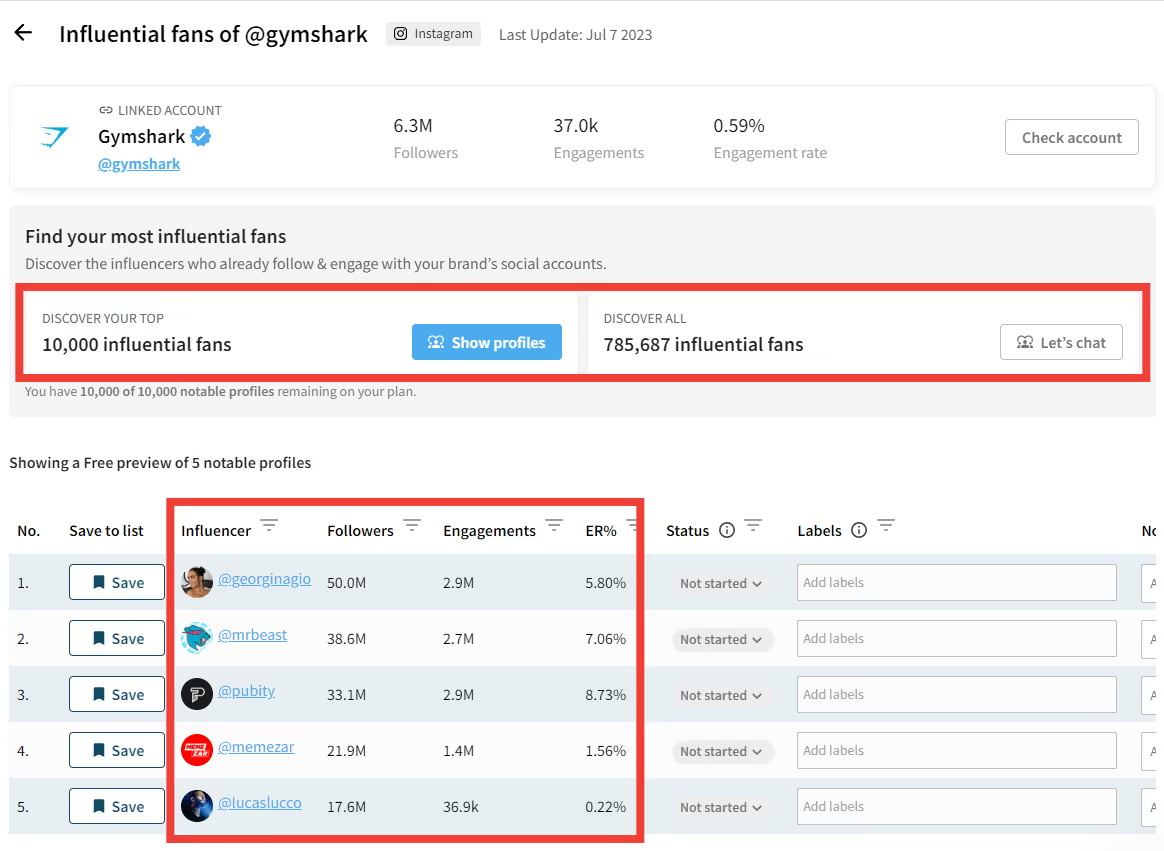
Now, you have a list of influencers who follow your brand and have over 1k+ followers. You can click on each of their profiles to check their audience demographics, past content, engagement rate, etc.
Not just this: you can also upload a list of your customer base or newsletter subscribers to check if any of those people have over 1k+ followers on their social media profiles.
- Import a CSV file with your customers’/subscribers’ email addresses
- Select a social media channel (Instagram, TikTok, or YouTube)
- And you’re done!
Try Modash for free. You don’t even need to take out your credit card.
Cold creators
For cold creators, you’re going out into the field and searching for the people who might be a good brand fit for you.
Now, you can do this manually. Scrolling around on social media, asking for recommendations, tailoring your FYP etc. — and this can absolutely work to get started from zero. The main downsides are related to data & time. You don't know the creator's performance (e.g. engagement rate, average views) and audience demographics until you reach out and ask. And it just generally takes a long time.
If/when you're ready to buy a dedicated tool to make the process more effective, try Modash.
It lets you search & filter through every public social media profile with 1k+ followers on Instagram, YouTube, and TikTok. For example, let’s say you want to find potential creators who:
- Live in a specific country (e.g. United States)
- Have a specific range of followers (e.g. 5k–50k)
- Produce content in your desired niche (e.g. skincare)
In Modash, you can add these filters and find a list of creators who match these conditions:
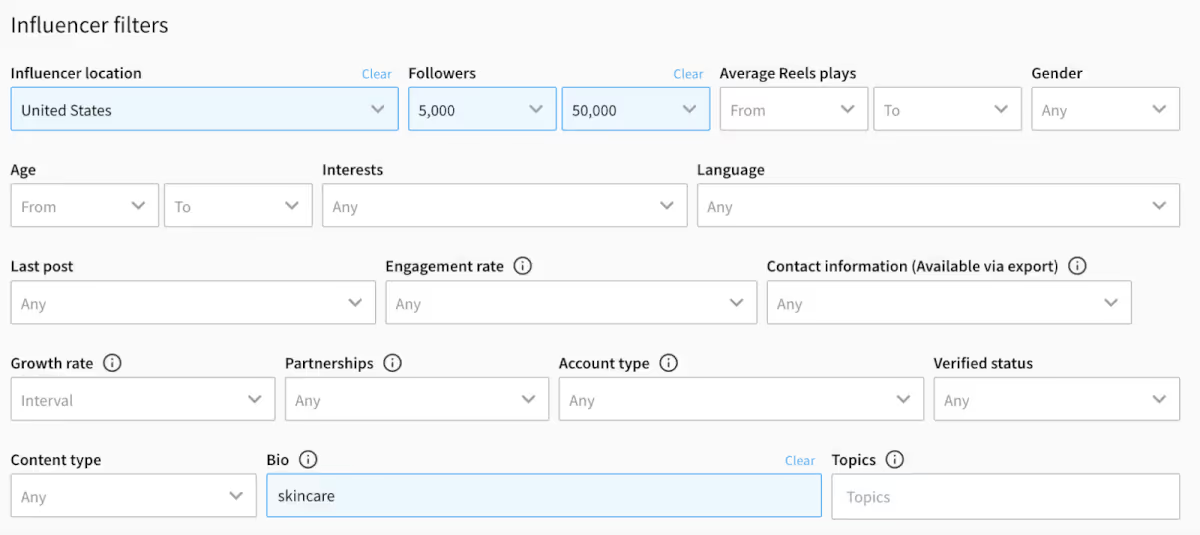
You can also filter based on audiences. For example, you can find creators whose audience:
- Are predominantly in a specific country (e.g. United States)
- Are of a certain age range (e.g. 25–34)
- Have interests that match your niche (e.g. beauty & cosmetics)
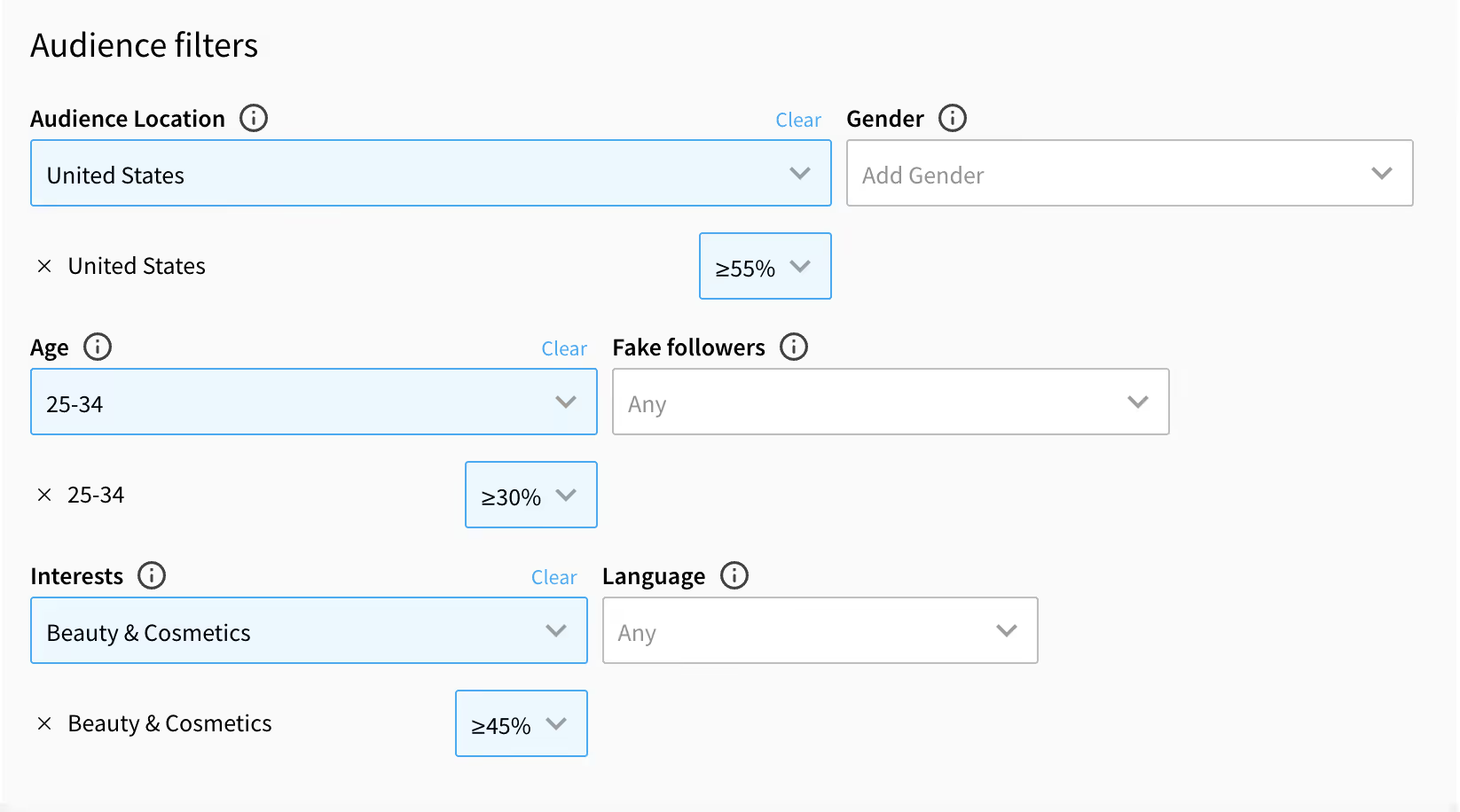
⚡ Pro-tip: don’t apply all these filters all at once. Add them slowly and keep narrowing down your list gradually as you find relevant influencers. This’ll help widen the pot and ensure you aren’t missing out on any gem of a creator because you were too rigid in the beginning.
When you find influencers you like, keep adding them to a list on Modash. After doing a mix of warm and cold creators, you’ll have a shortlisted group of influencers you want to reach out to. That brings us to step three.
Step 3: Start outreaching to your shortlisted creators
Your influencer outreach strategy for gifting campaigns should focus on three things:
- Personalize every message (as much as possible)
- Get creators curious about your brand and offer
- Follow up at regular intervals
Before we dive deep into each pointer, it’s crucial to remember that the success of your influencer outreach efforts depends on how properly you’ve vetted potential creator partners. Assess influencer profiles thoroughly to find influencers who are not just brand-fit, but also campaign-fit. Nothing can improve your response rate if you’re reaching out to the wrong creators.
Personalize every outreach message (as much as possible)
Mass outreach is tempting because it’s easy and quick, but it’s not effective. Why?
- No matter how “good” your mass message is, creators can tell the message is sent in bulk. This starts off influencer relationships on the wrong foot and creates a sour first impression
- Mass outreach messages don’t stand out in an influencer’s crowded inbox. You’ll land in the ‘Select all and delete’ pile because your message didn’t catch or hold their attention
In contrast, when you personalize a message instead of doing a mass outreach, you immediately stand out and become more memorable to the creator.
What should you say in your outreach message? Talk about why the creator is a good fit for your gifting campaign, what stood out the most in their content, and how they align with your mission & values.
Dmitri Cherner says personalizing your message is also the easiest way to stand out as a brand:
But, how do you scale your influencer outreach if you want to personalize every message? Templatize your introduction – stuff about your company and campaign. Personalize the rest. Here’s an example:

Except for the call to action, everything clicks well in the above example. The message is short, personalized, and easy to follow. More than half of influencer marketers in our influencer outreach survey use similar partially-templated outreach messages.
Note: Modash can also be used for personalized outreach. Load up a template, then personalize it quickly using the context from the profile sidebar. It looks like this:

Get creators curious about your brand and offer
The CTA of your outreach message of gifting campaigns shouldn’t be too specific or detailed. You don’t want to make a high-demand ask right away. Use the CTA to entice curiosity in influencers about your offer. Ask them if they’re interested in working together, and if yes, send another email sharing campaign’s exact details.
Piper Philips shares her call to action for no-strings attached gifting campaigns:
This will excite creators and put a win in your bag – getting the first response from your influencer outreach is always the hardest.
Follow up at regular intervals
Influencers are busy people. The good ones have plenty of brands clogging their inbox. Plus: a creator’s job isn’t a typical 9-5 – so they might not check their inbox as often. It’s easy for your message to drown or get missed.
Dmitri Cherner, Former Head of Influencers at OneSkin, agrees:
Follow up 3-4 times in total. You can send the first follow-up message after two to three days of your initial outreach message. After that, you can start increasing the time between each follow up message to about a week. Don’t forget to account for weekends and public holidays.
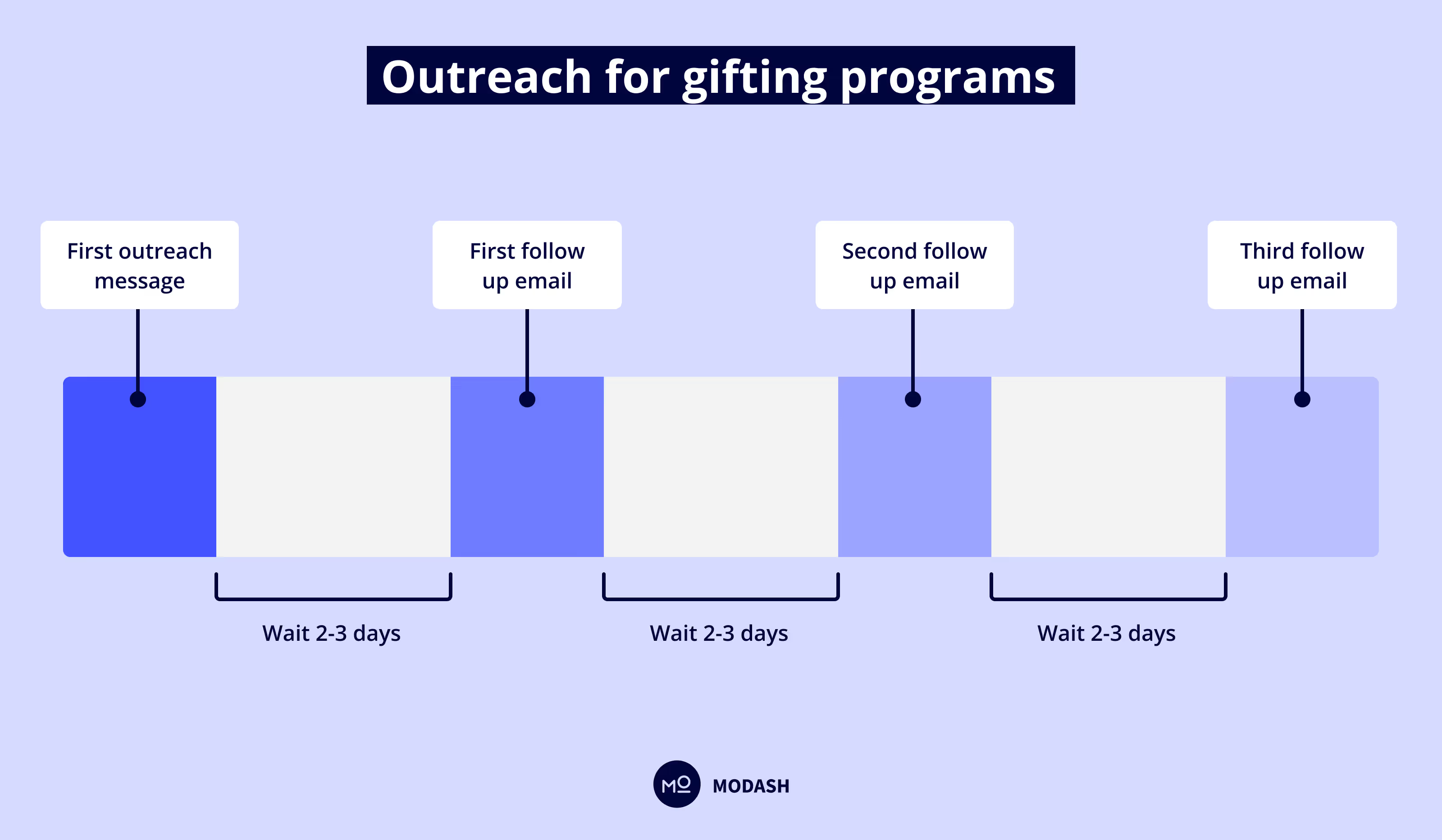
Return to the whiteboard after completing your first big round of outreach and follow-ups. Which kind of influencers had the highest response rate? Maybe you find nano influencers are more responsive than macro influencers. Did one CTA variation work better than the other in improving your response rate? Try to spot patterns and use these insights to improve your next round of influencer outreach.
Step 4: Negotiate the terms of your collaboration
When an influencer responds to your outreach message, begin negotiating on the following two aspects:
a) Do you want to put together an influencer contract? You don’t need an influencer contract for gifting campaigns, but you should have a simple agreement in place if you are asking the creator for usage rights for social media, newsletters, ads, and more.
b) Do you want to take a no-strings attached approach or ask for specific deliverables in return? If you’re signing barter deals, ensure that you also negotiate on:
- Post deadlines. You can shift this if there are any shipping delays but have a rough agreed-upon timeline for when influencer content would go live.
- Content type. Also get specific about the kind of posts you want in exchange for the product. Should it be a Story or an in-feed post, for example.
- Creative freedom. In barter deals, you can help creators brainstorm ideas. But how much creative input should you provide based on the deal you’ve negotiated – will a creator post an unfiltered, honest review, or will you help them highlight your product’s unique selling points?
Step 5: Sending the products
People who haven't ran an influencer gifting program before tend to underestimate how much time they'll spend ordering products for influencers.
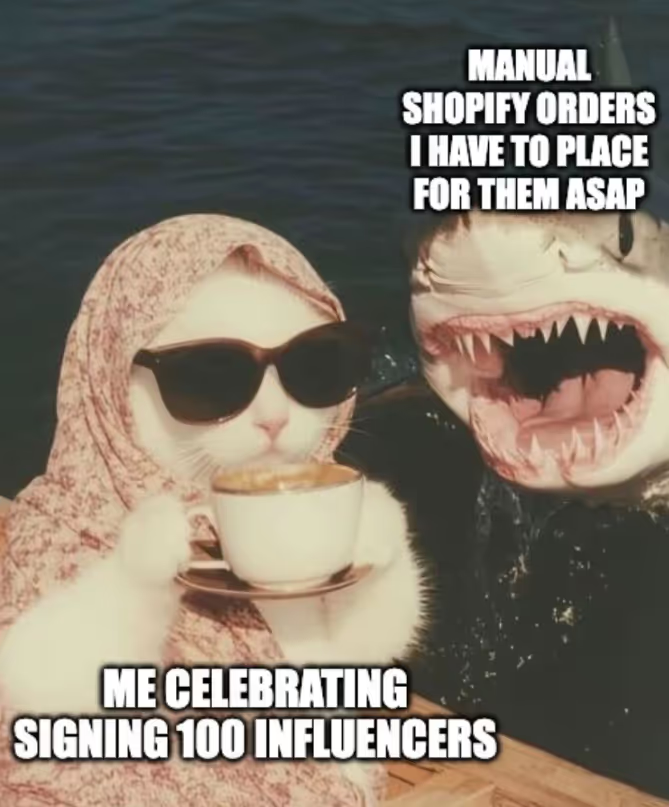
Just like other steps in this process, there's a free way to get started - and software you can mature into once your program gets some traction.
To get started you can simply ask for addresses, ask for the size/color/flavor (or whatever other options you have), and place the order yourself.
A small upgrade on that would be to set up a Google Form that collects the information for each creator.
A bigger upgrade which removes the majority of the manual work for the brand/marketer is included in Modash's feature set. Here's how it works:
- Modash generates a link that gives the creator a 100% discount code to place their order themselves
- You have control over the settings: which products they can choose from, and the maximum product value
- The creator then receives confirmation & tracking emails just like a regular customer
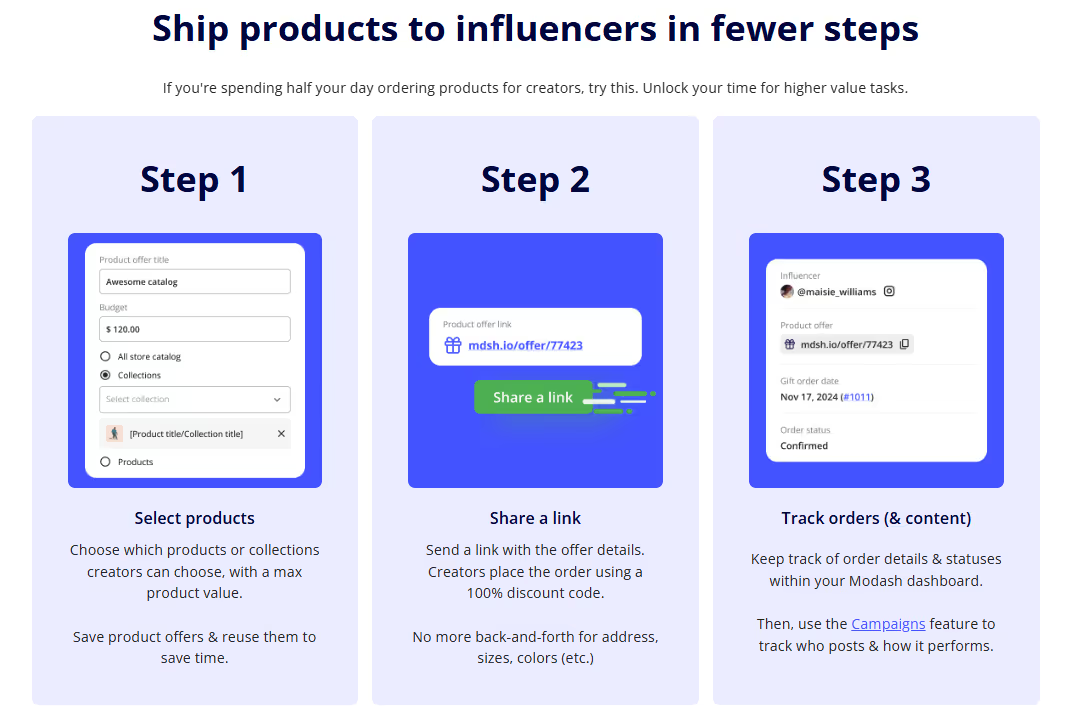
Doing it this way cuts out the manual work and back-and-forth about addresses & details, and it reduces waste - because the creator will definitely receive the product they actually wanted.
Additionally, if you're running your program in Modash - this is in the same place as everything else. Find influencers, send emails, create UTM links, ship products etc. - all in the same place.
Step 6: Manage and track gifting campaigns
When an influencer receives your product, ask for feedback – what they liked, what they didn’t, and how you can improve. Andreea Moise, Influencer Marketing Consultant at HypeMaven, suggests not asking for influencer content anywhere in this initial conversation:
For barter deals, the process is a little more formal.
If you have negotiated a barter deal, reinstate the posting deadline after the feedback conversation. You can also briefly summarize any other expectations you have already discussed.
If there’s a content approval process in place, you might want to follow up with influencers and keep the line of communication open to make sure you can check out the proposed content before it goes live.
It’s important to keep track who has posted content around your gifted products – and who hasn’t. Influencers might miss deadlines – and you’ll need to follow up with the creators if a deadline gets missed.
You can track those posts either via a hashtag you’ve agreed on, or you can manually scroll through the influencer’s content to find it. Instagram stories are a little trickier – as they’re not permanent pieces of content.
Once again, a paid influencer tracking tool like Modash can handle this. Here's how it works:
a) You set up a campaign with your list of creators that are receiving products
b) You tell it what to track. Either specific mentions/hashtags for your campaign, OR if you are doing a no-strings campaign & aren't sure what to expect, you can use a setting that tracks all content - to make sure you never miss anything, even a Story.
c) You'll get a campaign overview that shows who has posted, what, your total views, engagements, comments, and so on.
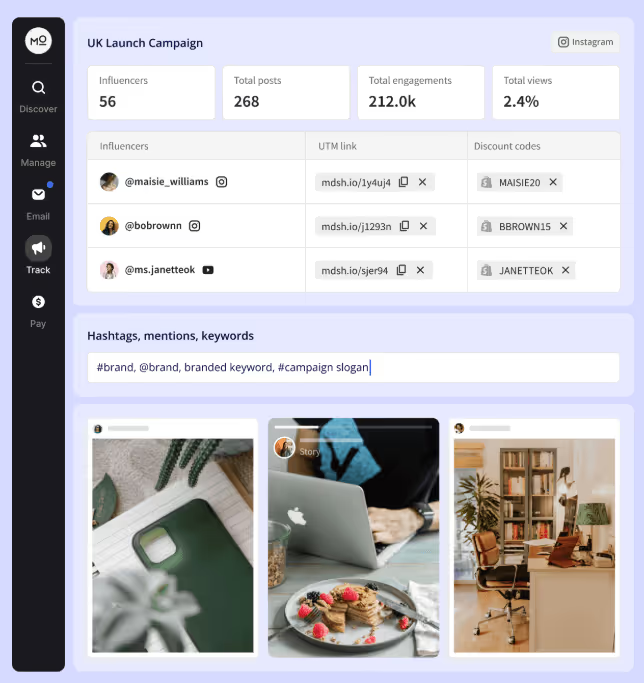
3 common gifting challenges and how to solve them
Running a gifting program from end-to-end is no cakewalk – even if it seems like that in theory. Here are the three most common challenges you should be prepared for:
1: You don’t get enough outreach responses for your gifting campaigns
Not getting a good response rate in your outreach efforts might be because of one of three reasons:
- You are reaching out to influencers who aren’t open to doing gifted collaborations or aren’t a good fit for your brand/campaign
- Your offer is not compelling enough
- Your outreach messages aren’t personalized enough
Let’s understand how you can nip each issue in the bud.
You’re reaching out to the wrong influencers
Pardon me for sounding like a broken record, but I’ll say it again: you need to spend more time vetting to find the right influencers. The influencer you reach out to should be:
- A good fit for your brand
- A good fit for your campaign
- Open to influencer gifting collaborations
Take Faber Books. They created hype around a book they were publishing, Intermezzo, by gifting an early copy of it to various book influencers like Jess.
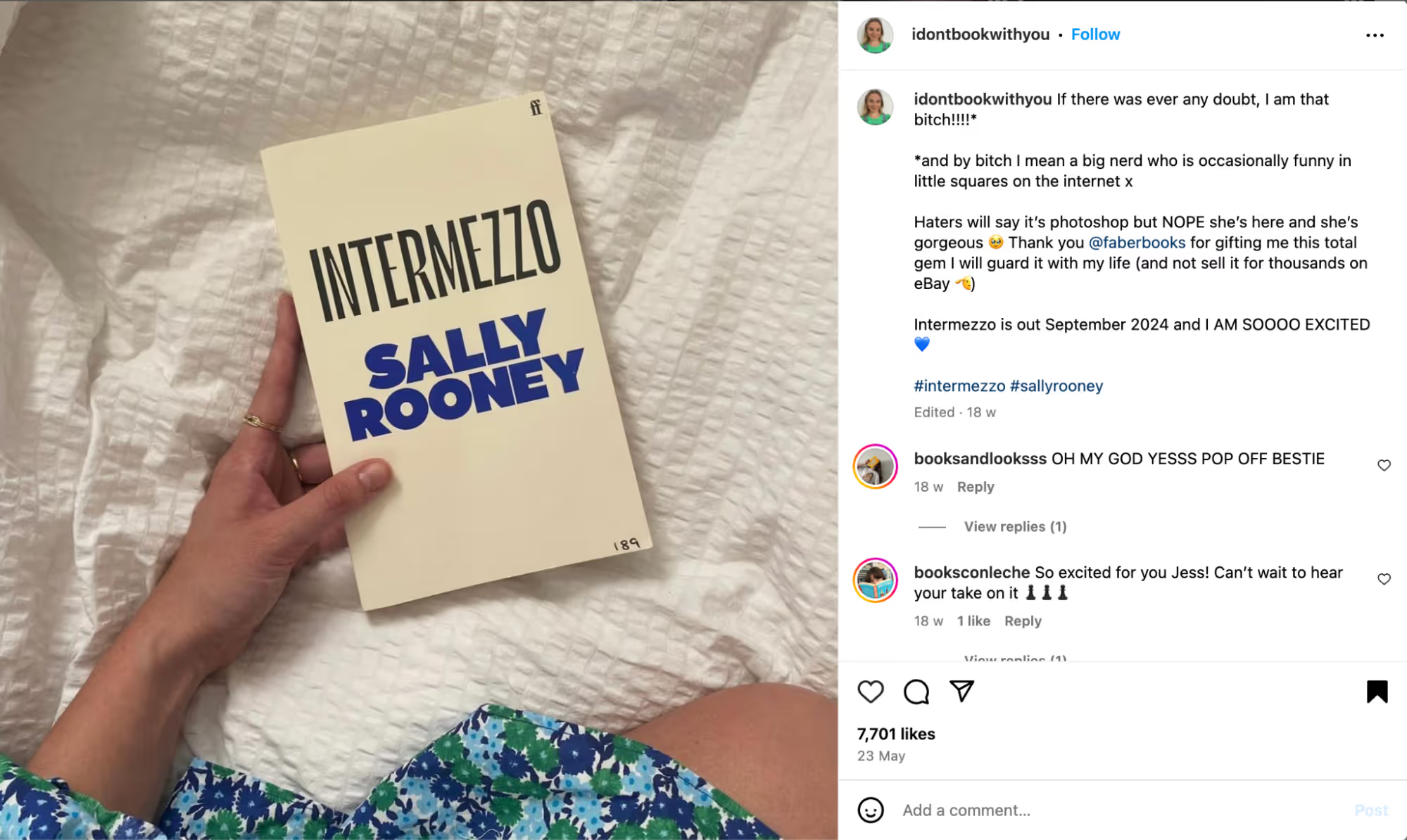
The collaboration works well because Jess matches the vibe of the brand and campaign – especially the part about ‘not selling it for thousands on eBay’ has the undertone of familiarity that can only come with proper influencer vetting.
Andreea advises doing this influencer research homework before you start your outreach efforts:
Initially, you might need to send a high volume of outreach messages to understand which kind of creators work best for your brand. It might be hit and miss for a while, but you’ll learn important lessons to guide your future gifting strategy. So pitch to a lot of creators of different kinds, niches, and sizes to derive conclusions on what gets you the most ROI.
Your offer is not compelling enough
Go back to the blackboard and reread your offer to creators. It should be worth a creator’s time and energy. Would you have replied to you?
For example, it’s harder to work with you as a brand if you have a lot of strict guidelines around creating content. Mandatory things like this – without the cushion of a flat fee – can turn off creators and they might choose not to respond.
Another thing to think about: is your product interesting enough to work for free? If you're looking for a barter deal, for example, it's going to be a lot harder to secure for a $20 product than a product worth $200. It might be worth it to think about incentivizing your offer.
If you want to make your offer more appealing, you can include the bait of future long-term influencer partnerships. This will show a creator the potential revenue of collaborating with you and give you the testing environment of a gifting campaign to check whether or not an influencer’s worth promoting to a paid/affiliate partnership.
Your outreach messages aren’t personalized enough
Don’t copy-paste the same message to every creator. No matter how good you write, mass outreach can be spotted from a mile away. And no influencer would like to feel like just another cog in the machine.
To have them make the effort to respond and continue the conversation, you have to make the effort to show that you care and truly want to partner with them. And nothing says that better than a personalized outreach message.
Piper says the best way to find a unique and personalized angle is to manually vet an influencer’s page and uncover things you have in common:
If not common interests, you can also personalize your outreach messages by giving genuine and specific compliments – anything that screams, ‘I notice you.’
2: You’re getting poor-quality influencer content
It’s frustrating when you put your blood and sweat into getting influencer content from gifting, but it all turns out to be a dud. There are usually three ways to tackle this challenge:
- Spend more time on influencer selection (yes, this again)
- Help creators brainstorm angles to create content for you
- Delight and surprise creators so they’ll be motivated to create high-quality content for you
Let’s dig our teeth into each solution.
Spend more time on influencer selection
Are you finding creators who align with your brand values and expectations? Have they already created content that you like with other companies? Does the creator have a genuine need for your product?
You can also gauge this from their response to your messages. Are they enthused that you reached out? Did they get happy when the product arrived at their doorstep?
For example, Mubarak Clutches gifted their purse to influencer Benny Stakes. She might not fit their direct niche, but you can see how much she loves the product – her appreciation jumps off the screen.
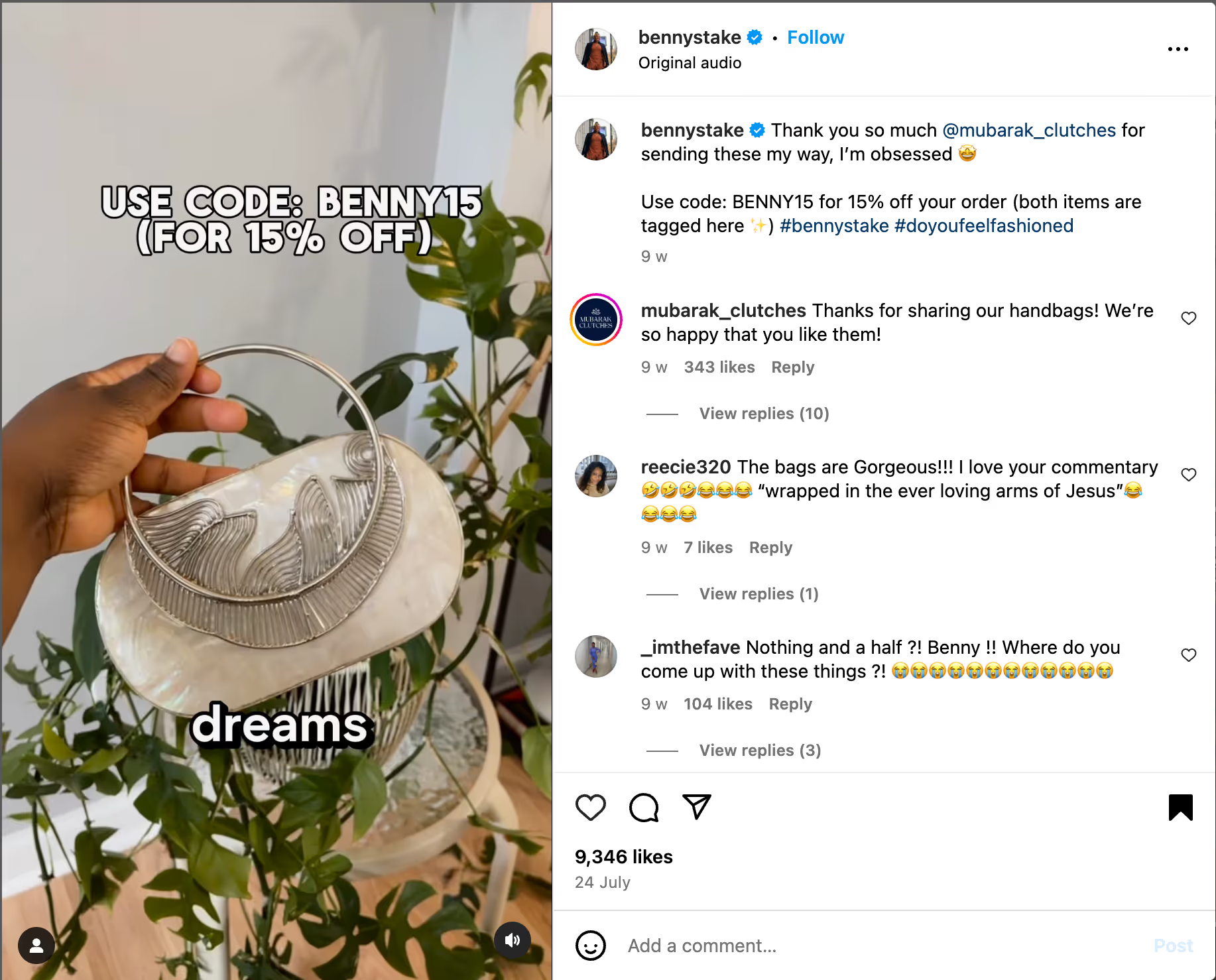
If an influencer isn’t excited to try your products, they’ll create lackluster content just to get the job done. The opposite is also true: when they’re genuinely thrilled by your products, it’ll reflect in their content.
Help creators brainstorm angles to create content for you
You can offer content suggestions to creators if you’re doing a barter deal. If you’re going for a particular aesthetic, for instance, add a moodboard to your campaign brief. Share expectations about the content you’re looking for so influencers can meet them.
Sharing a moodboard, or previous content examples can help guide content in the direction you're looking for.
You might not be able to do this in no-strings attached deals. But it doesn’t hurt to nudge things in the right direction. Send a brief pamphlet including info you’d like the influencer to present, if they decide to post. Be a bit more subtle about it rather than giving guidelines. Something simple such as, “If you decide to post about us, you should know [info about your product]. We’d be so grateful if you decide to mention it!” should do the trick.
There’s scope in no-strings attached deals that creators might completely ignore your suggestions, but it doesn’t hurt to try.
Delight and surprise creators so they’ll be motivated to create high-quality content for you
When influencer marketer Lauren Roth worked with a candle brand, she’d ask influencers for their preferred scents while running gifting campaigns. But she also sent a candle with a similar scent as a surprise.
This thoughtfulness created a burst of joy within influencers – which was evident in their content, too. Do something similar to delight and surprise your influencer partners.
After all, who doesn’t like surprises?
3: You get ghosted by creators after shipping your products
Imagine this: you reach out to a creator and offer to gift them your product. They seem excited in their messages. But when you ship the product…crickets. What gives? Unfortunately, it’s a common scenario in gifting campaigns. While you can’t caste a no-ghosting-allowed spell over your brand (I wish), you can do two things to avoid this situation as much as possible:
Set expectations before you ship the products
If you’re doing barter deals: while negotiating, agree on a timeline when an influencer would post about your brand. This will allow you to enforce a fair demand (gently). Creators who don’t agree with your timeline or conditions can weed themselves out – limiting the ghosting.
If you’re doing no-strings attached deals: enforcing any expectation is difficult. But it doesn’t cost a penny to say, “I hope you’ll be able to share your feedback by ABC date!” when you know the estimated arrival date of your product.
Followup with influencers after they receive your product
Don’t expect creators to come to you with posts and feedback after receiving their gift. It’d be nice, but it’s not the norm. Be proactive in tracking delivery dates and message influencers asking if they received the product in good condition.
Once they reply, you can move the conversation forward. Ask them to share feedback first. Keep the spotlight on them. What did they like about the product? What do they think could be improved? Eventually, ask them (in barter deals) and/or encourage them (in no-strings attached deals) to post about your product.
Ready to run successful gifting campaigns?
The faster you begin searching for relevant influencers, starting a conversation, and shipping your products…the sooner you’ll start to drive impact and learn hard lessons.
By reading the above guide, you’ve done the upfront work. You’ve learned all the theoretical principles, mistakes to be aware of, and solutions to common challenges. But nothing is as good a teacher as experience. Go out there and get your hands dirty. And don’t be afraid to experiment a little.
Use Modash to find the right creators, get their email addresses, and track your whole gifting campaign from start to finish.
I’ll make it even easier: you can log in to Modash right away and start finding the right creators, scouring their emails, writing outreach messages, & tracking the whole campaign. No credit card, demo, or friction needed. Sign up here.











